Germany 2020
Wonderful German City Trips
2020 was a lost year because of the Covid-19 pandemic? Not at all. Finally, after five years, I could see my best friend Sarah again. In February, I visited her in Saarland. It was my first time, visiting the Saarland, so I was double enthusiastic to see my friend again and to explore Saarbrücken. In 1909, the capital of Saarland was created by the merger of the three towns Saarbrücken, St. Johann and Malstatt-Burbach.
After having breakfast, we started to walk around in the city centre of Saarbrücken. The Town Hall St. Johann,
built between 1897 and 1900, is the largest neo-Gothic building in
Saarland and one of the most beautiful town halls, I saw in Germany.
Also in St. Johann, we visited the market square with the St. Johanner
Marktbrunnen, a fountain, which is declared as a historic monument.
Another really great sightseeing place is the Lutheran Baroque-style Ludwigskirche,
a symbol of the city and one of the most important Protestant churches
in Germany, along with the Dresden Frauenkirche and the St. Michael's
Church in Hamburg. The inner side of the church was a "dream in white"
and I was really impressed of it. Then, we also visited the Baroque Château of Saarbrücken,
which was built in 1575. Today, the castle serves as the administrative
seat of the regional association. The exhibition rooms of the Saar
Historical Musem are located in the vaulted cellar and also parts of the
casemates are accessible to visitors from the museum.
The next day, we decided to visit Blieskastel, a town, 25 km in the
East of Saarbrücken. The town has a unique urban complex and is
characterized by its Baroque architecture with the Town Hall and the two
famous fountains - the Hercules Fountain from 1691 and the Napoleon
Fountain from 1804. After having vegan burgers and a vegan "Donauwelle"
for lunch, I had to take the train back to Göttingen.
In July, I started a one week trip to Heidelberg, Würzburg, Rothenburg
ob der Tauber and Bamberg. It was my first holiday after quitting my
job, so I could feel free and enjoy the whole time. In general,
Heidelberg is one of my favourite cities in Germany. Every time, when I
visit Heidelberg, I feel like coming home - even if I never lived in
Heidelberg. For me, it's like a real Neckar Paradise.
Heidelberg is one of the few German major cities that wasn't destroyed during World War II. A special feature is the Baroque old town, which - after the destruction in 1689 and 1693 - was rebuilt on a medieval floor plan. Most of the important buildings are located in the old town, which is 1,6 km long and has one of the longest pedestrian zones in whole Europe. Around 2830 buildings are listed in the entire city area. Heidelberg is also the seat of the oldest university in Germany, which was founded in 1386. One of the landmarks of Heidelberg is the Renaissance style Castle Ruin, which has been partially rebuilt since its demolition in the 17th and 18th centuries. After following the uphill path from Kornmarkt, I reached the castle terrace, from where I had such a beautiful view over the whole old town, the castle main complex and the Karl Theodor Bridge, commonly known as Old Bridge. It was my first time, visiting the castle in Heidelberg, even if I have been there many times before and I have to say, it was worth it. I also saw the Elisabethentor, a gate which was built in 1615 from Friedrich V. for his wife Elizabeth Stuart. The triumphal arch-like structure is decorated with fine sculptural animals such as frogs, lizards and squirrels. It is also the entrance to the Stückgarten from where it was possible to see one of the most beautifuls views to the old town on the Neckar river.
Inside of the castle, I visited the German Pharmacy Musem. It's the central German museum for the history of pharmacy since 1957. It has extensive collections, the exhibits of which cover the entire German-speaking area from antiquity to the 21st century. After finishing my round tour through the castle, I decided to make a Neckar promenade on the other side of the Old Bridge, which was constructed 1788. At first, I also wanted to go hiking at the famous "Philosophenweg". But since I was already tired from the city tour, I decided to eat dinner and drink one of the specialities of the region - an apple wine, which is a kind of cider.
The next destination was Würzburg in the traditional region of Franconia in the north of Bavaria. It was my first time, visiting Würzburg for a tourist trip. Actually, it was already planned to visit Würzburg for a 10 km run in 2019, but then I decided to travel to Thailand instead.
The first sightseeing place, I visited, was the impressive Würzburg Residence, a Baroque style palace, constructed between 1720 and 1744 and a UNESCO World Heritage Site since 1981. Luckily, it was a warm summer day, so that I really could enjoy the beautiful garden in its fullest prettiness. But I wasn't only fascinated by the garden, for me, the highlight was the golden hall of mirrors inside of the residence. It's the most precious room in the residence, but it's just a replica of the original mirror cabinet, which melted during the fire in the residence in 1945. The restoration of the cabinet began in 1979 and lasted eight years and nowadays, it's a beautiful highlight inside of the residence.
After walking trough the city centre, passing the town hall and the "Grafeneckart" - the oldest part of the town hall with its 55-metre-high Romanesque tower - I arrived at the Old Main Bridge - the only river crossing bridge until 1886. I had to cross the bridge to leave the old town of Würzburg and for hiking to the Marienberg Fortress. But later on, I came back to enjoy the sunset with a glass of the Franconian Silvaner white wine. While being in Würzburg, it's definitely one of the things, which should be done!
Passing the beautiful vineyards along the hiking trail, I arrived at the Marienberg Fortress after about 45 minutes. The fortress is a former fortification and a former prince-bishop's castle on the Marienberg, 100 metres above the Main river. Most of the structures of the fortress were built in Renaissance and Baroque styles between the 16th and 18th centuries. From the observation platform at the Princes' Garden, it wasn't only possible to have an amazing panoramic view over the whole city centre on the other side of the Main river, it was also a beautiful place for a break to enjoy the Renaissance style garden itself with its geometrically arranged fountains, flower beds and pavilions.
At the end of the day, after a stunning sunset, I decided to have my
dinner in the restaurant called "Backöfele". They served traditional
Franconian dishes and wines and since I was more than satisfied with
bread dumplings and mushrooms on my first day, I also came back again to
try Sauerbraten in a sauce refined with gingerbread, served with
hand-rolled potato dumplings and red cabbage. Just one word to say:
Yummy!
From Würzburg, I took the train to Rothenburg ob der Tauber for a
one-day-trip. The city name means "Red Castle above the Tauber", because
the town is located on a plateau overlooking the Tauber river. With the
largely preserved medieval Old Town,
the town of Rothenburg is a world-famous sight with many monuments and
cultural assets. It's really fascinating, walking through the historic
old town with the beautiful colored half-timbered houses and the
surrounding walk-on-able Town Fortification.
Rothenburg, which is also one of the highlights of the oldest and most famous holiday routes in Germany - the Romantic Road - is also the home of the delicious "Schneeballen", a pastry made from shortcrust pastry in a shape of a snowball. A kind of Christmas atmosphere is created by many manufactories for sweets and wooden toys and also by the Käthe Wohlfart Christmas Museum, the world's largest selection of traditional German Christmas ornaments like candles, nutcrackers and Christmas tree decorations.
Maybe the most famous place and the landmark of Rothenburg is Plönlein, which is actually not only the yellow timber-frame house at the entrance of the Spital quarter. Plönlein is translated as a "small square at a fountain", so that the Plönlein also includes the fountain in front of the lone timber-frame house and the two towers of the old city wall - the Siebersturm on the left and the tower of the Kobolzeller Gate on the right side. After passing the Kobolzeller Gate, I walked along the city wall, until I arrived at the Castle Garden, from where I had an amazing view over the Tauber Valley.
The last destination on my trip in July was Bamberg. It was a spontaneous plan to take the train from Würzburg to Bamberg on this Thursday morning and even if it was a rainy day, I was glad, that I took the chance to see the beautiful Old Town and the famous Old Town Hall - the landmark of Bamberg - on the Regnitz river.
The Old Town Hall was first mentioned in 1387 and was rebuilt between
1461 and 1467 in a Gothic architecture style. Between 1744 and 1756, it
was redesigned by Johann Jakob Küchel in the Baroque and Rokoko styles
and also painted with frescoes by Johann Anwander in 1755. The town hall
was given its current painting between 1959 to 1962, when Anton Greiner
repainted the facades.
Feeling like staying in a medieval German town? Feeling like in Italy? Everything is possible in Bamberg. One of the highlights is "Little Venice", a colony of fishermen's houses from the 17th century along the eastern banks of the Regnitz river. Dense half-timbered buildings and tiny gardens define the image of this district in Bambergs island town.
The most famous building in Bamberg is the four-tower Bamberg Cathedral,
a Romanesque building and one of the former imperial cathedrals, which
was founded in 1004 by Emperor Henry II. and finished in 1012. After a
partially destroying by fire in 1081, it was rebuilt and received its
present late-Romanesque form in the 13th century. The cathedral contains
different kinds of impressive art, especially the marble tomb of Henry
II. and his wife, and the well-known treasure of the "Bamberg Horseman".
Close to the cathedral, I also visited the beautiful Rose Garden of the
New Residence
with its more than 5000 roses. Unfortunately, it started to rain
heavily, so I decided to go back to the train station and don't take a
relaxing break at the garden.
When we came back of our trip to Slovenia in August, we decided to have
a stop-over in Augsburg. Since we didn't stay so long, we couldn't do a
real sightseeing tour around the whole city and I couldn't visit the
famous Fuggerei, so that I definitely have to visit the city in the future again.
Augsburg - the Germany's third oldest city after Neuss and Trier - has so many beautiful highlights to visit such as the Renaissance style Town Hall, which was built between 1615 and 1624, with the impressive Golden Hall - in German "Goldener Saal" - which is a ceremonial room with ceiling paintings, murals and golden wall decorations. After visiting the Golden Hall, we walked around the town hall square to have a look to the 70-metre-high Perlachturm, which was an original watchtower, built in the 10th century.
Before having a Korean dinner, we also visited the Romanesque Catholic Cathedral of Augsburg, founded in the 11th century and the former Prince-Bishop's Residence with its beautiful garden. So even if we just had a short time, staying in Augsburg, we made the best out of it and saw many great sightseeing places.









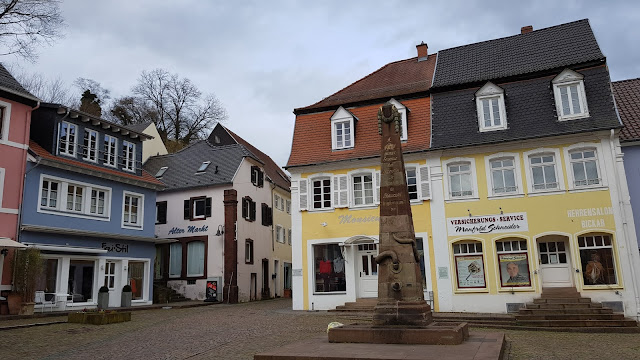




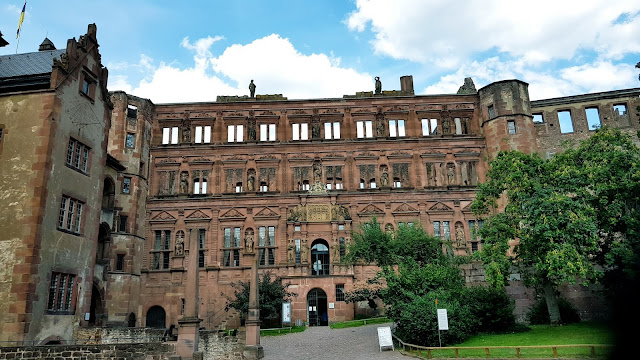

































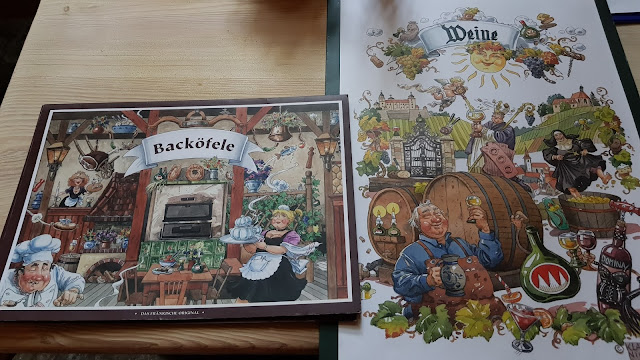






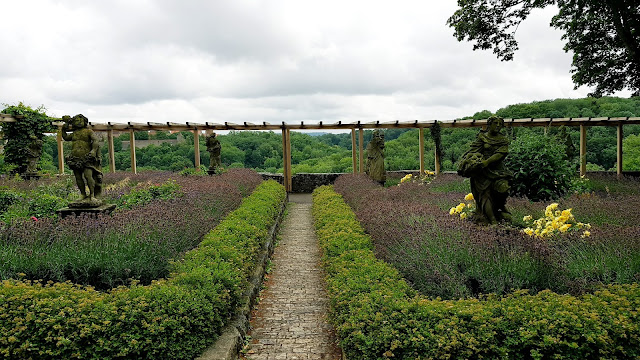


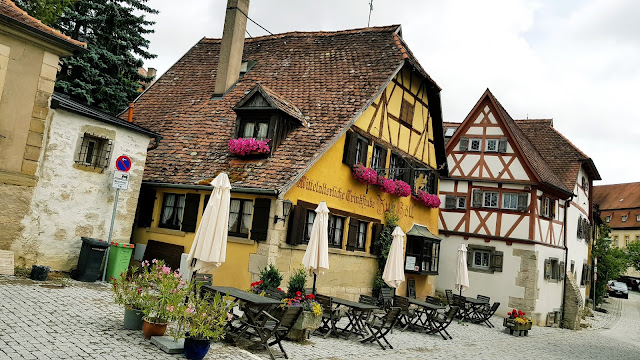



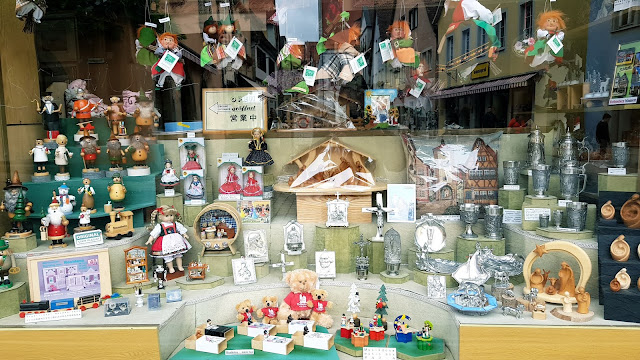






























Comments
Post a Comment